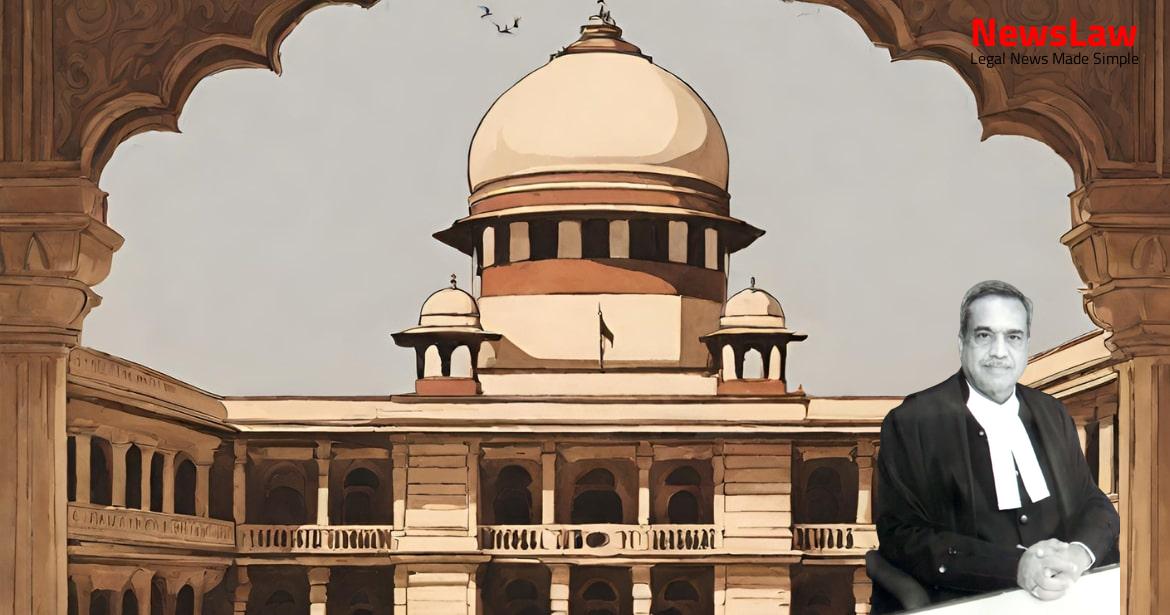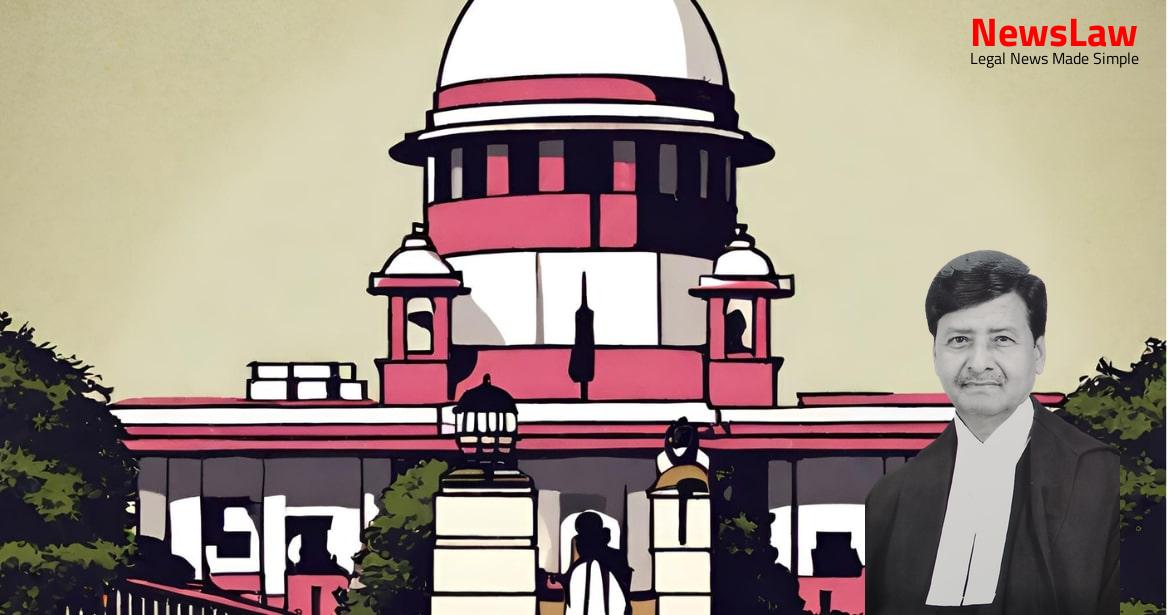In a recent legal case, the Court delved into the intricacies of interpreting tax schedule entries, shedding light on the complexities involved in classifying products for taxation purposes. The analysis provided by the Court offers valuable insights into the application of tax laws and the significance of accurately categorizing goods for taxation. Understanding the legal reasoning behind such decisions is essential for businesses and individuals navigating the realm of tax compliance and exemptions.
Facts
- The Single Judge of the High Court of Judicature at Allahabad dismissed a Sales/Trade Tax Revision instituted by the Commissioner of Commercial Taxes.
- The judgement and order were dated 11 September 2019.
- The respondent is a dealer registered under the UP VAT Act 2008.
- The sewing process is done on the neck portion of the kameeze/kurta; no stitching is performed on Salwar.
- The Tribunal classified the product sold by the respondent as a ‘textile’ under Entry 21 of Schedule I, thus exempting it from tax.
- The appellant’s revision before the High Court challenging the decision was dismissed.
- A survey conducted in 2010 at the respondent’s establishment by the Special Investigation Branch revealed the nature of the business as described by a partner.
- The first appellate authority partially allowed the appeal and classified the goods as ‘textile made ups’ subject to a 4% duty under Serial Number 16 of Schedule IIA.
- The Tribunal later allowed the appeal filed by the respondent and rejected the Revenue’s appeal.
- The relevant entries in the Schedules of the UP VAT Act 2008, particularly Schedule I which provides a list of exempt goods, are crucial to the controversy.
- During the survey, a partner of the respondent described the nature of the business involving the manufacture of unstitched suits, salwar, kameeze, dupatta, cutting, and embroidery work.
Also Read: Electoral Malpractices in Mayor Election
Issue
- The issue for consideration in the present appeal is whether the commodity…
Also Read: Balancing Power and Transparency: Electoral Bonds Struck Down, Disclosure Mandated
Arguments
- Mr. R K Raizada, senior counsel for the appellant argued that the term ‘other textile made ups’ should be interpreted in conjunction with bedsheets and pillow covers mentioned in Entry 16.
- The counsel emphasized that ‘other textile made ups’ cannot be considered as a standalone entry but should be understood within the context of the entire entry.
- This submission was made to support the appellant’s case regarding the interpretation of the entry in question.
Also Read: Recall of Resolution Plan Approval: Legal Analysis
Analysis
- The issue at hand pertains to the classification of a product as per different entries in the tax schedule.
- The product in question is a salwar kameez suit for women, which is purchased unstitched by the respondent.
- The respondent carries out cutting and embroidery work on the textile material in their factory.
- The Assessing Authority classified the product under the residuary entry in Schedule V, taxed at 12.5%.
- The First Appellate Authority classified the product under Entry 16 of Schedule II, taxed at 4%.
- The appellant further challenged the classification before the Commercial Tax Tribunal.
- The Tribunal’s decision was to classify the product under the exempt goods in Schedule I Entry 21, which was disputed.
- The Court analyzed the definitions and interpretations of ‘textile’, ‘textile made ups, and ‘manufacture’ in reaching a decision.
- Ultimately, the Court determined that the product falls under Schedule V as a residuary entry, subject to 12.5% tax rate.
- The High Court and the High Court were in agreement that the Tribunal’s factual findings did not require interference.
- The judgement of the Tribunal and the first appellate authority need to be set aside based on the reasons outlined.
- The High Court’s error was in disregarding the clear meaning of the entries in the Schedules of the UP Vat Act 2008.
Decision
- The appeals arise from a judgment and order of the Allahabad High Court dated 11 September 2019.
- The appeal was allowed, setting aside the impugned judgment and order of the Single Judge of the Allahabad High Court.
- Pending applications were disposed of.
- The appeal was disposed of in the above terms.
- The present appeals were disposed of in terms of the judgment in Civil Appeal No 793 of 2021.
- Pending applications, if any, were disposed of.
- The order of the Assessing Authority was restored.
- Civil Appeal No 794 of 2021 and Civil Appeal No 795 of 2021 arose from SLP(C) No 3886 of 2021 and SLP(C) No 3887 of 2021 respectively.
- Leave was granted for Civil Appeal No 794 of 2021 and Civil Appeal No 795 of 2021.
- The High Court disposed of the revisions by a common judgment and order.
- No order was passed as to costs.
Case Title: THE COMMISSIONER, COMMERCIAL TAX, U.P. LUCKNOW Vs. S/S RUJHAN STUDIO (2021 INSC 138)
Case Number: C.A. No.-000793-000793 / 2021



